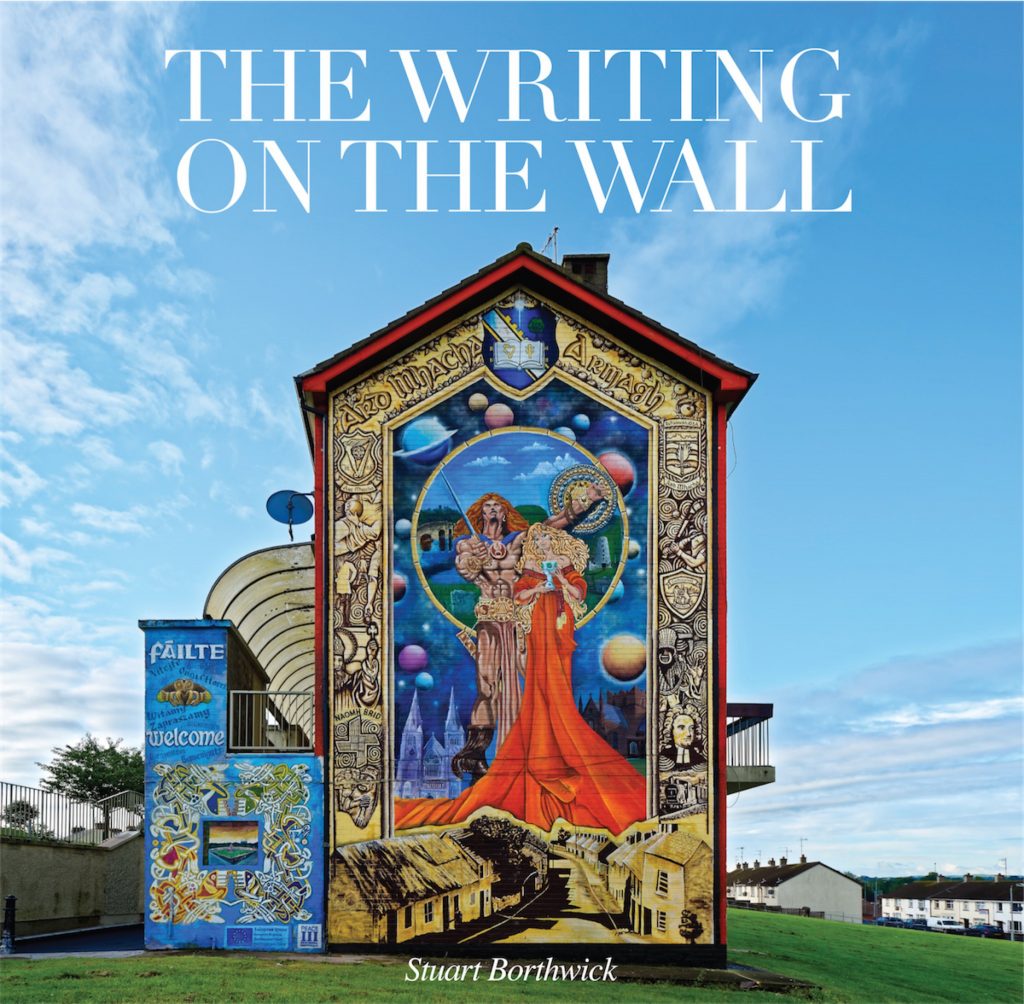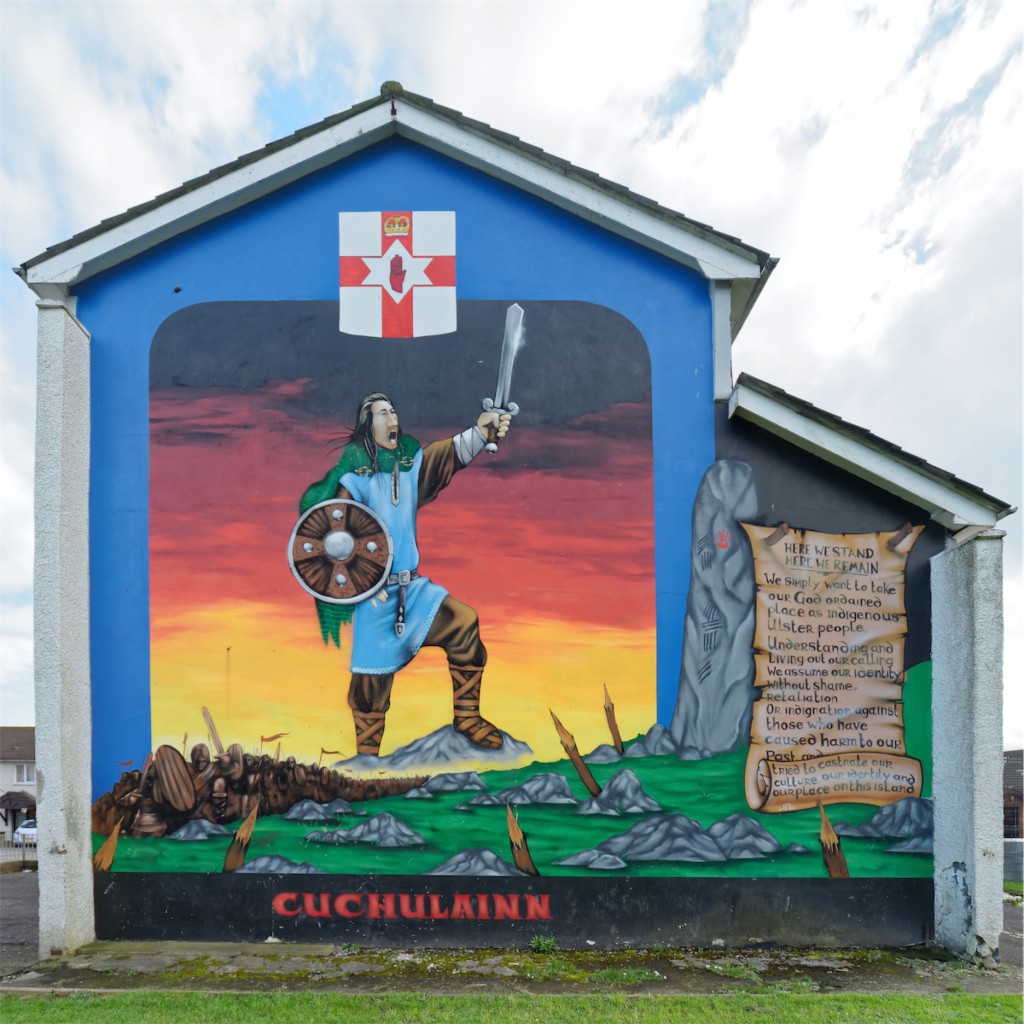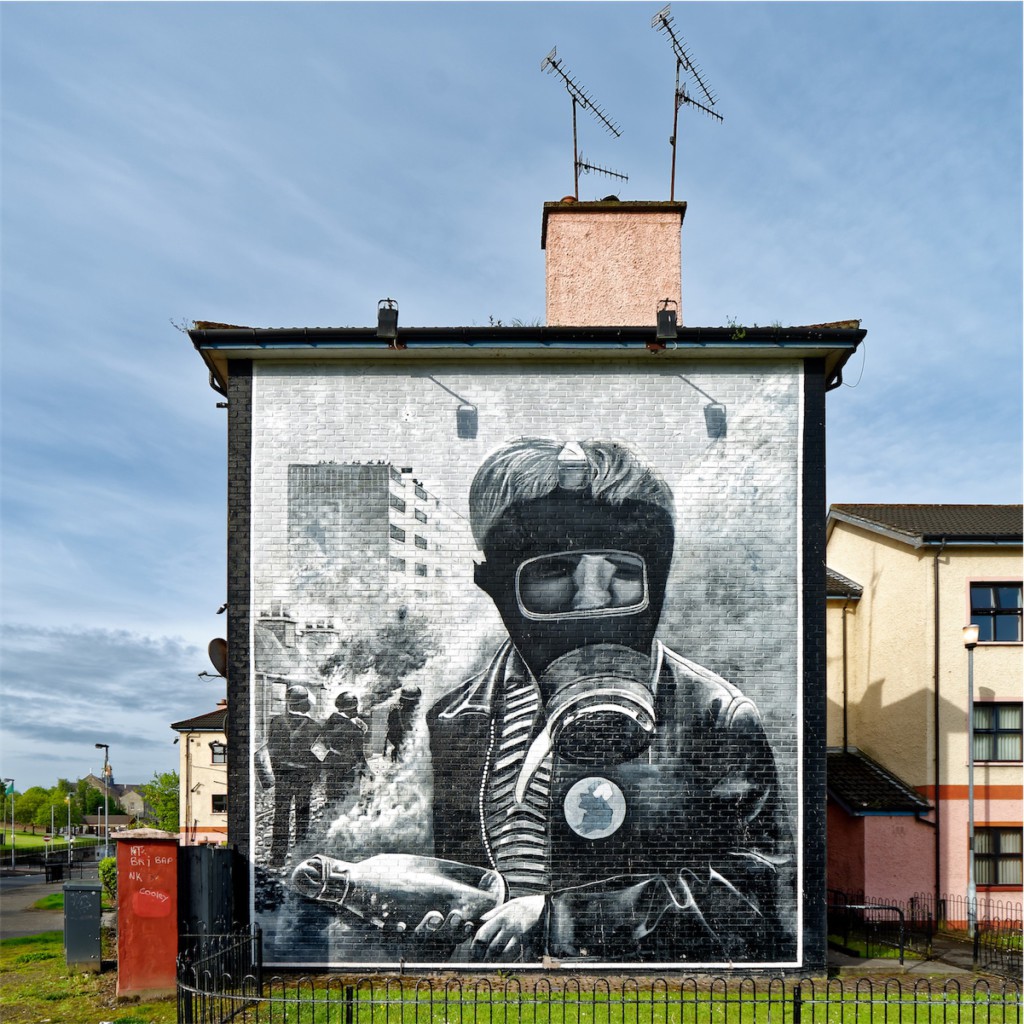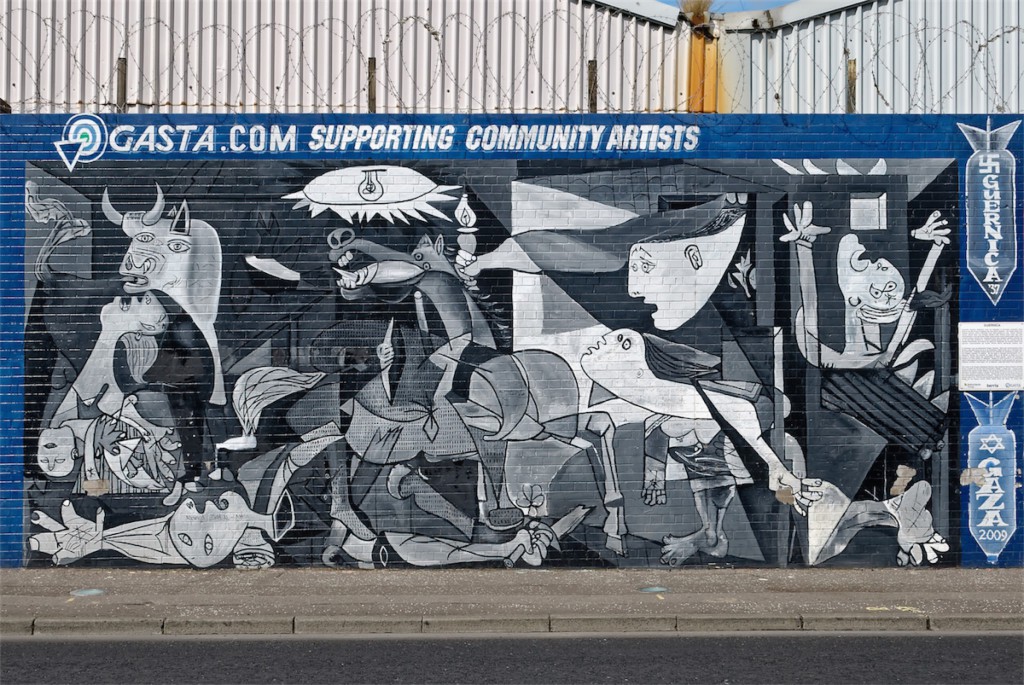By my estimates, there are around 500 to 600 murals of various shapes and sizes in Northern Ireland. Between 2008 and 2015, I visited and photographed around 400 of them, with just short of 200 of these photographs featuring in my book The Writing on the Wall: A Visual History of Northern Ireland’s Troubles, published in October 2015 by Bluecoat Press. I do not claim to have laid eyes on all the murals in Ireland, but Bill Rolston, Emeritus Professor at the Transitional Justice Institute at Ulster University, could probably lay claim to having seen and photographed all but a very small handful. A self-confessed “mural hunter”, Rolston has spent several decades chronicling the aesthetic, cultural, political and socio-economic shifts in the Northern Ireland mural painting tradition, and his work has been highly influential on all those who are intrigued by this unique phenomenon.

Rolston’s first book-length publication on the subject, Drawing Support: Murals in the North of Ireland (2002), outlines the development of the loyalist mural painting tradition in Belfast and beyond through the twentieth century, whilst also noting the emergence of republican murals during the hunger strikes of 1981. Incorporating 112 photographs of murals painted between 1981 and 1991, and written at the time of the ban that prevented the broadcasting of voices of the supposed representatives of paramilitary groups, Rolston makes the point that the painting of murals was a way for both loyalist and republican groups to counter their lack of access to mainstream communication channels. In many ways, and to invert Carl von Clausewitz’s aphorism, mural painting during this period (and perhaps beyond) was a continuation of war by other means.

Three follow-up volumes, published in 1995, 2003 and 2012, contain 340 photographs in total and continue the narrative. All three chronicle the way that the painting of murals both reflected, and contributed to, the developing peace process. Drawing Support 2: Murals of War and Peace depicts the first republican murals to talk explicitly of peace whilst also capturing a central dichotomy of loyalism at the time, namely how it might remain intact whilst moving beyond armed conflict. As Rolston puts it when discussing the 1994 loyalist ceasefires, “the paradox was that in many ways the ceasefire required loyalists to protest even more loudly than usual that there was definitely ‘no surrender’” (p.vii). Drawing Support 3: Murals and Transition in the North of Ireland looks at the period after the Good Friday/Belfast Agreement and contrasts the keenness of republican muralists to comment on contemporary events with the preference of loyalists to reiterate and reaffirm their support for armed conflict. Published in 2012, Drawing Support 4: Murals and Conflict Transformation in Northern Ireland, documents the changing form and content of murals through the preceding decade, noting a move on the part of Republican muralists to strengthen and deepen the connections between Republicanism and its international allies in South Africa, Cuba, the Basque country and Palestine.

This theme of international solidarity within the republican movement is also explored in Rolston’s work for scholarly journals, particularly in a seminal essay for the Journal of Black Studies entitled ‘“The Brothers on the Wall”: International Solidarity and Irish Political Murals’ (2009). Other pieces are no less influential – particularly papers on the British state’s relationship to murals as mediated through ‘Re-Imaging’ programmes and an essay for the Irish Studies Review that discusses the relationship between image and community, and how murals “not only reflect the commitment or otherwise of political groups to the ongoing peace process, but also reinforce that commitment for the communities that view them” (p.3). More recently, a 2013 essay in the State Crime journal includes photographs and analyses of murals painted on the republican and loyalists wings of HMP Maze during the 1990s. With regard to this latter work, it is hoped that a wider audience will see full-colour reproduction of these images in a future publication. More recently, Rolston has travelled to Chile and Iran to photograph murals, and to Columbia on a Leverhulme Trust scholarship to study street art, and this work, globalising the analysis of political murals, is ongoing.

What the reader draws from all of Rolston’s work on murals is a sense of the complicated relationship between murals and popular discourse. In the Northern Ireland context, murals do not merely reflect the opinions of loyalists and republicans, and neither do they simply direct the opinions of the communities in which they are situated. Murals in Northern Ireland provide the raw material for conversations within loyalist and republican communities; they support, return and substantiate specific points of view whilst also looking outwards to those other non-aligned ‘viewers’ who now tour popular mural sites on foot and on buses.

Bill maintains that his interest in murals is a hobby that has ‘got out of hand’, but all those who seek to understand and contextualise the relationship between Northern Ireland and its murals are in his intellectual debt. For those of us who also seek to photograph murals, as I do, there is also a very specific further legacy of his work during conflict. From the early 1980s onwards, legend has it that Rolston was a regular fixture during the painting of murals, with his camera ever ready to capture the completed mural. This will have been a dangerous activity at the time; not only could he get caught up in trouble that was not of his making, but his community activism in nationalist areas made him a legitimate target in the eyes of loyalists. Bill took a risk when first photographing murals, but his quiet physical presence has paved the way for a future generation of photographers and lessened the dangers for others. I have always been made to feel very welcome when photographing both republican and loyalist murals throughout Northern Ireland, with strangers often wishing me well or pointing out the location of other paintings nearby. The groundwork for this reception was undoubtedly laid by Bill’s earlier presence photographing the same mural or a predecessor, and for that I am very grateful.

The Writing on the Wall: A Visual History of Northern Ireland’s Troubles by Stuart Borthwick (Bluecoat Press) is now on general sale. You can view Stuart’s photos of the murals on his Flickr page.
This is a guest slot to give a platform for new writers either as a one off, or a prelude to becoming part of the regular Slugger team.
Discover more from Slugger O'Toole
Subscribe to get the latest posts to your email.
